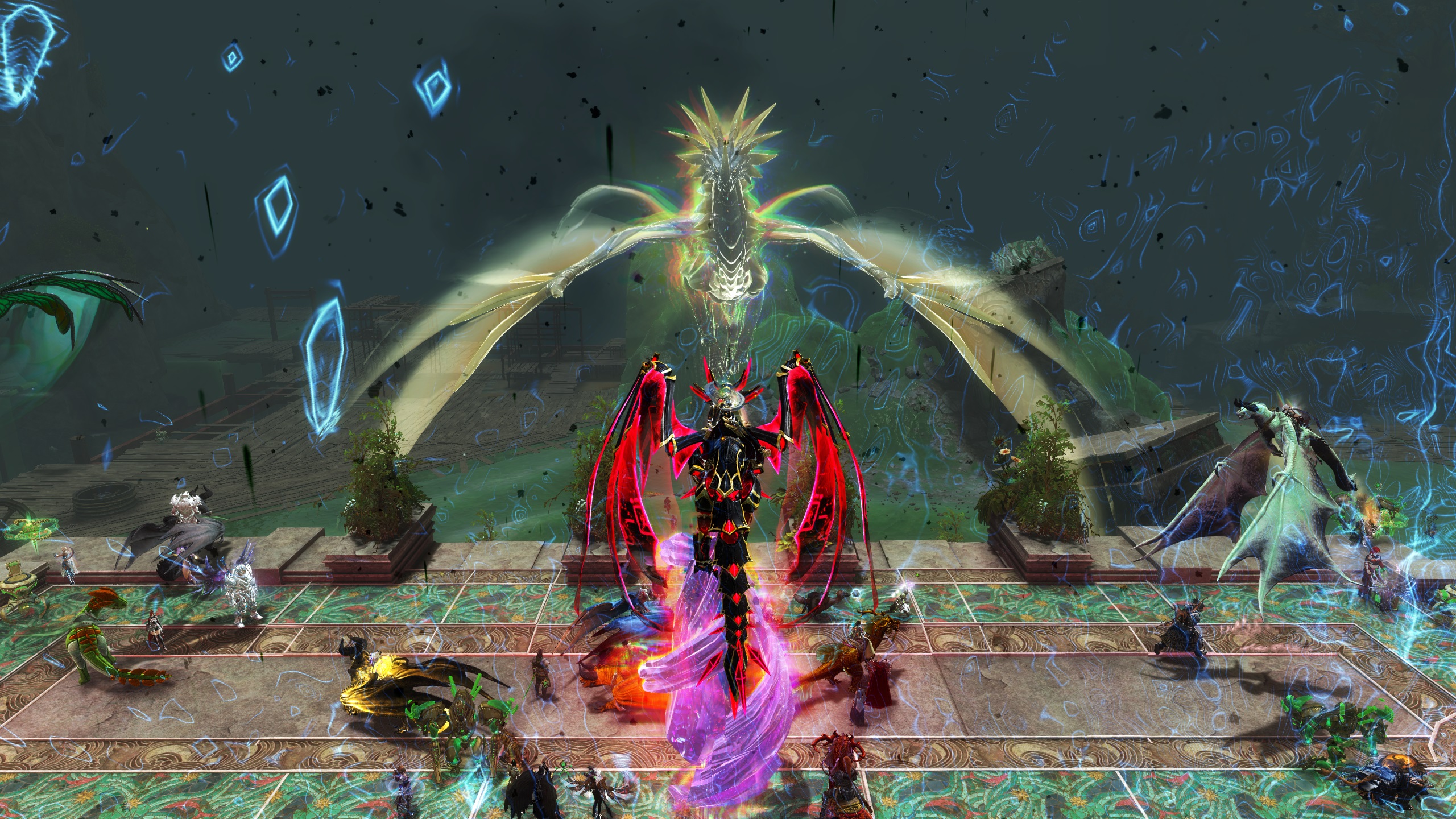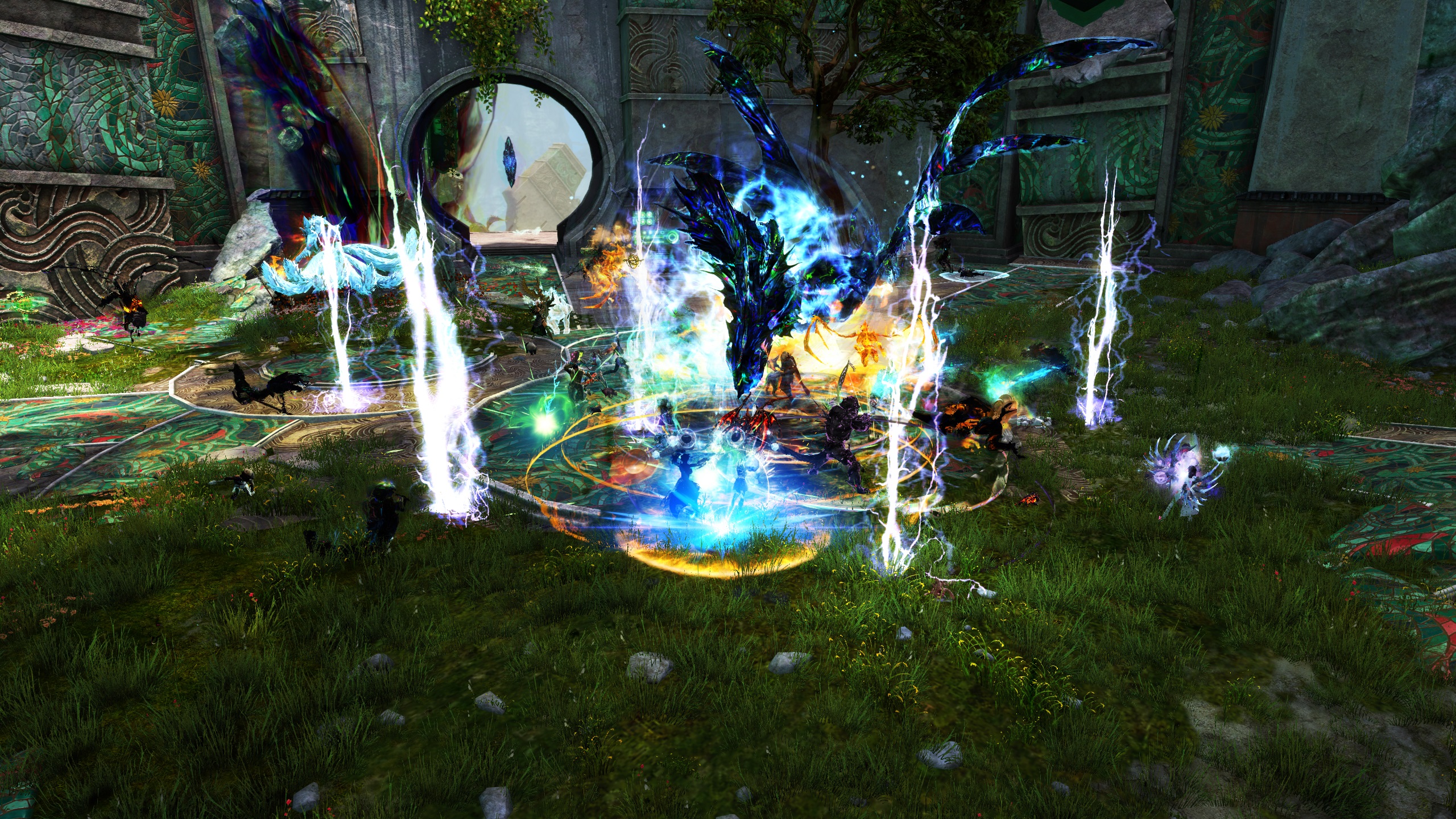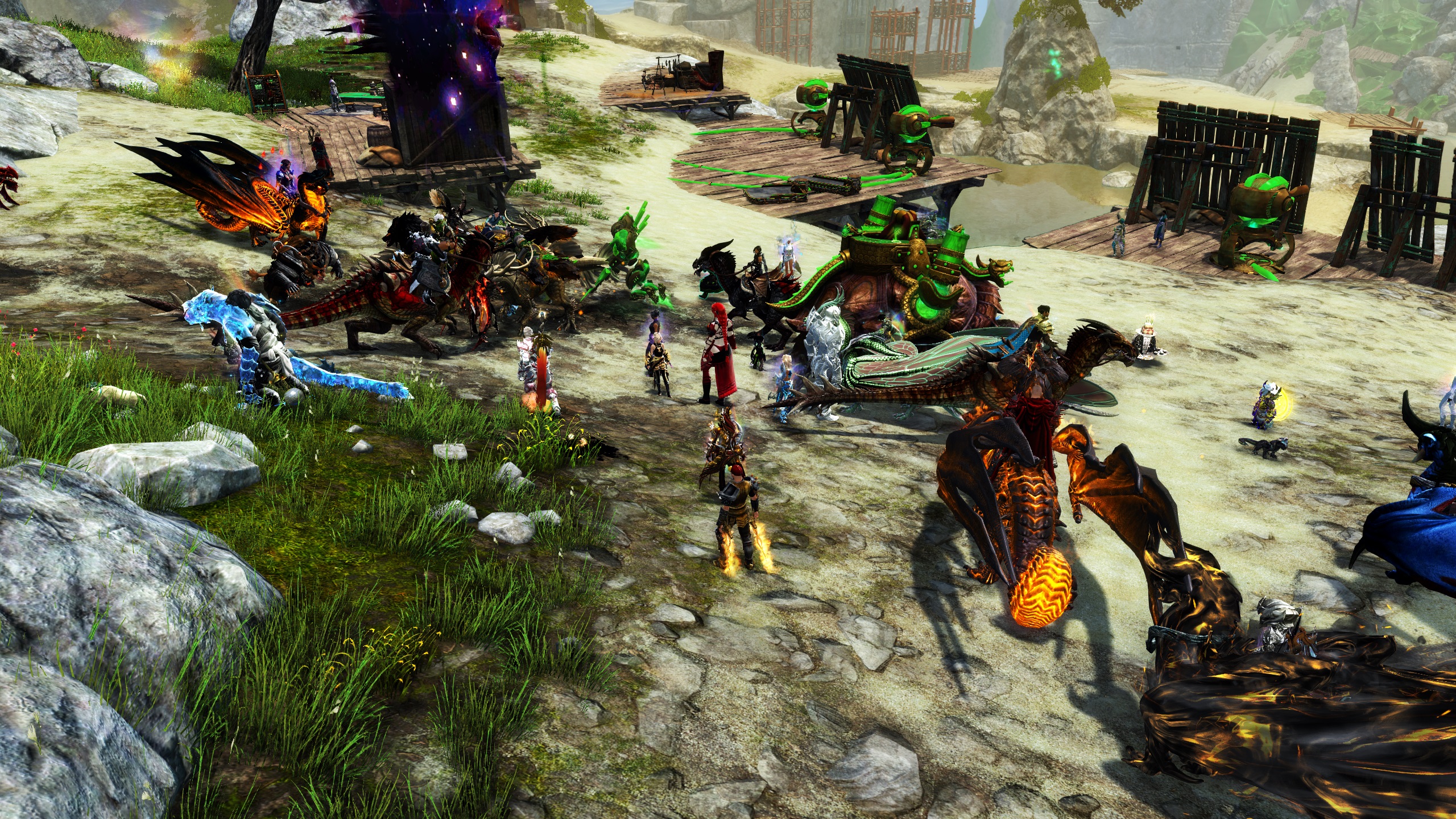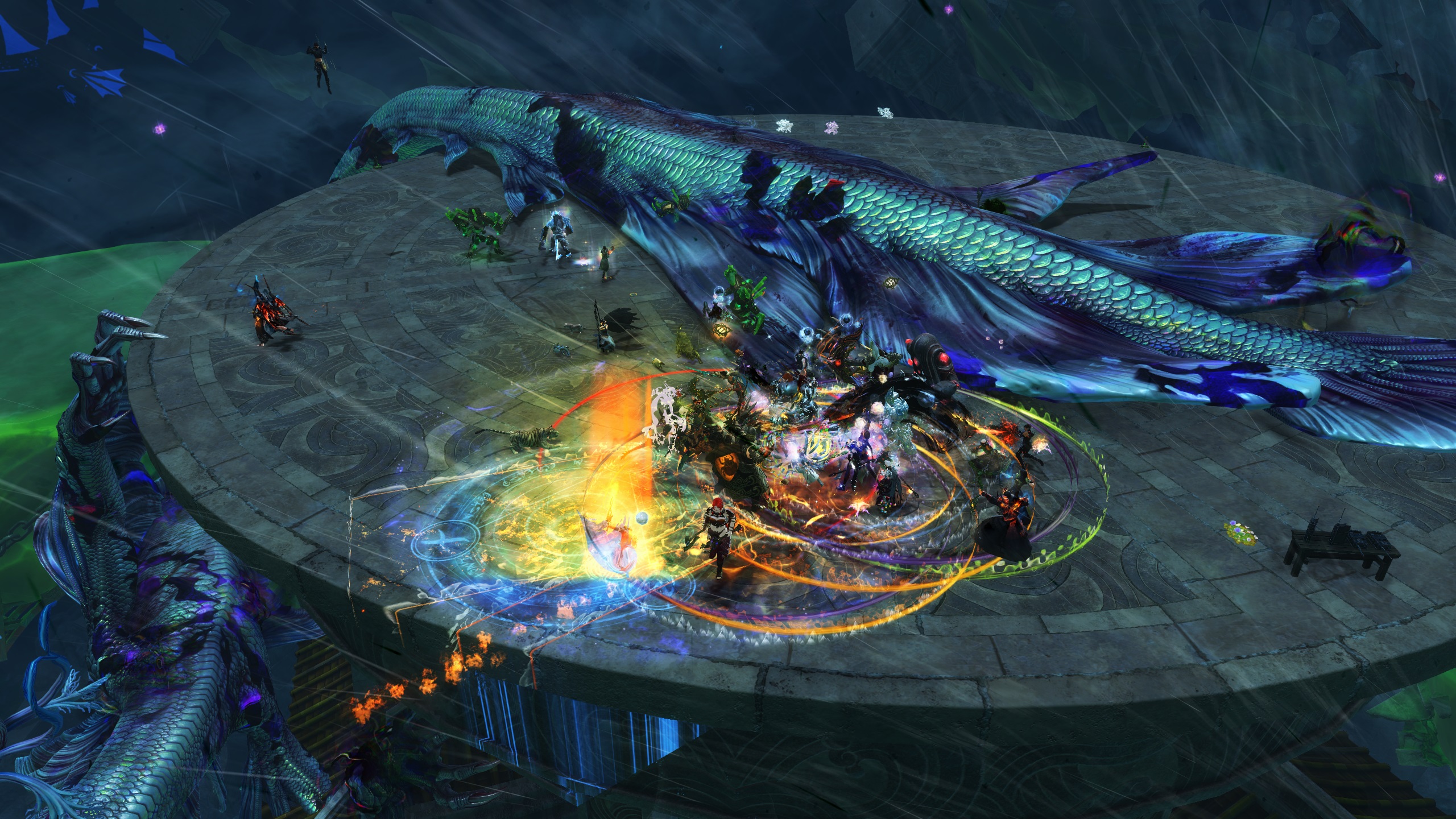End of Dragons gives Guild Wars 2 its most challenging open world fight yet
The Dragon's End map takes meta-event difficulty to a new level.

I knew End of Dragons' final map would be a treat when I saw its name: Dragon's End. More than just a nod to the expansion's title, it was a clear reference to Guild Wars 2's history of climactic, map-wide meta events.
Meta events—loosely defined as a chain of events that build to something bigger—are one of the best features of Guild Wars 2's open world; one of the main reasons for veteran players to return to older maps. They range hugely in size and style. Some, like Path of Fire's Crystal Oasis meta, are little more than a handful of collection events capped off by a comedy 'boss' fight. Others, though, are more involved, and the biggest aren't just a major part of the map—they are the map.
Take the final zone of Guild Wars 2's Heart of Thorns expansion, called Dragon's Stand. The entire map is focused on a single battle that plays out over multiple events. Players split between three lanes to push through the jungle dragon's corruption, recruiting allies and battling enemies as they work towards a final stand that takes place over multiple islands. The final map of Season 4 of Guild Wars 2's Living World updates—called Dragonfall—offers another multi-stage preparation capped off by a big boss encounter.
Like its similarly named predecessors, Dragon's End is built around its expansion's climactic battle. Players arrive and push towards a central tower, high in the sky, to have a big fight. More than just a memorable battle, though, ArenaNet has made Dragon's End different from its predecessors in one key way: by making it hard.
I'd heard talk of this as I played through the expansion's story. In Reddit threads, players would lament their repeated failures. In LFG, some squads were asking for more stringent requirements, from specific builds to—in extreme cases—raid completion proof. In patch notes, ArenaNet tweaked aspects of the fights, but remained clear in their messaging: "the encounter was designed from the start to be challenging."

When I finally reached the map to finish off the final few story missions, I stuck around to give it a try. I wasn't expecting much, but I lucked out. Our map's commander (players who volunteer to help organise the map) explained the mechanics clearly, talking us through what we needed to do every step of the way. Even then, we only just beat the boss, finishing up with just two seconds to spare.
A lucky experience—one that, in the few subsequent attempts, I've yet to recreate. The boss fight contains multiple phases, occasionally employing Guild Wars 2's favourite meta event trope of having players split between different sub-bosses that they need to take down at roughly the same time. Throughout, players have to prioritise targets—hitting a different part of the body at key moments (I'm being vague here to avoid being too explicit with spoilers)—using crowd control to free players trapped in whirlpools and extend boss damage phases, and, at a couple of points, having an out of body experience in the form of a loose jumping puzzle.
The biggest gaming news, reviews and hardware deals
Keep up to date with the most important stories and the best deals, as picked by the PC Gamer team.
It's a real spectacle: a map full of players contained on a single platform, ebbing and flowing as they dance to avoid giant attacks. We've come a long way from the core game's world boss fights, which look cool but rarely amount to much more than hitting autoattack and dodging the occasional AoE.

It makes sense that Dragon's End is the game's most challenging meta: this, finally, is the expansion that takes the time to teach combat concepts like breakbars and combo fields. But there's also a tension developing about how much difficulty is too much for an open world zone. The focus here is less on the mechanics of the fight, but rather the timer—if your map isn't doing enough damage, you will fail the event. And unlike instanced groups where you have more control over the people you play with, you can't choose who wanders onto your map. There's little you, personally, can do to change the outcome if you're playing with a group who can't generate enough total damage.
Even in Guild Wars 2's harder open world encounters up to now, brute force usually does the trick. And while you can fail Auric Basin—with its four boss rooms that need to be completed at the same time—it's increasingly rare. The damage is less important than knowing how not to fail.

But Dragon's End requires players to have a build that can get the most out of their profession—something that, outside of instanced content, is rarely needed. The encounter is running up against the fact the game doesn't do a great job of explaining its buildcrafting systems, and, as a result, it's causing some toxicity among a playerbase that, until now, had a reputation for being helpful towards each other.
There's also the issue of rewards. For the map to stay active in the long term—for people to continue to try to persist and improve—it needs a better reason to do so. This is something ArenaNet has already addressed, adding a daily Hero Choice Chest on completion that offers a selection of rewards—including an otherwise time-restricted item needed for crafting the new Legendary weapons. I suspect it will ultimately need more still. Much of Guild Wars 2's community is more concerned with what provides the best gold-per-hour return, and—thanks to the high chance for failure—Dragon's End currently falls well below the line. This is the fate that ultimately befell Dragon's Stand: it's an easier map to clear, but it's not rewarding enough to be worth doing regularly, and so, by and large, players don't.
There have already been a handful of tweaks and improvements to the fight, and it's clear there will be more over the next days and weeks too. Hopefully it'll retain some of its challenge, and do a better job of rewarding players for overcoming it. Dragon's End is the sort of fight that makes Guild Wars 2 stand out among its competition; a clear evolution of its open world design, and the kind of challenging, epic event that I'd love to see more of in the future.

Phil has been writing for PC Gamer for nearly a decade, starting out as a freelance writer covering everything from free games to MMOs. He eventually joined full-time as a news writer, before moving to the magazine to review immersive sims, RPGs and Hitman games. Now he leads PC Gamer's UK team, but still sometimes finds the time to write about his ongoing obsessions with Destiny 2, GTA Online and Apex Legends. When he's not levelling up battle passes, he's checking out the latest tactics game or dipping back into Guild Wars 2. He's largely responsible for the whole Tub Geralt thing, but still isn't sorry.

